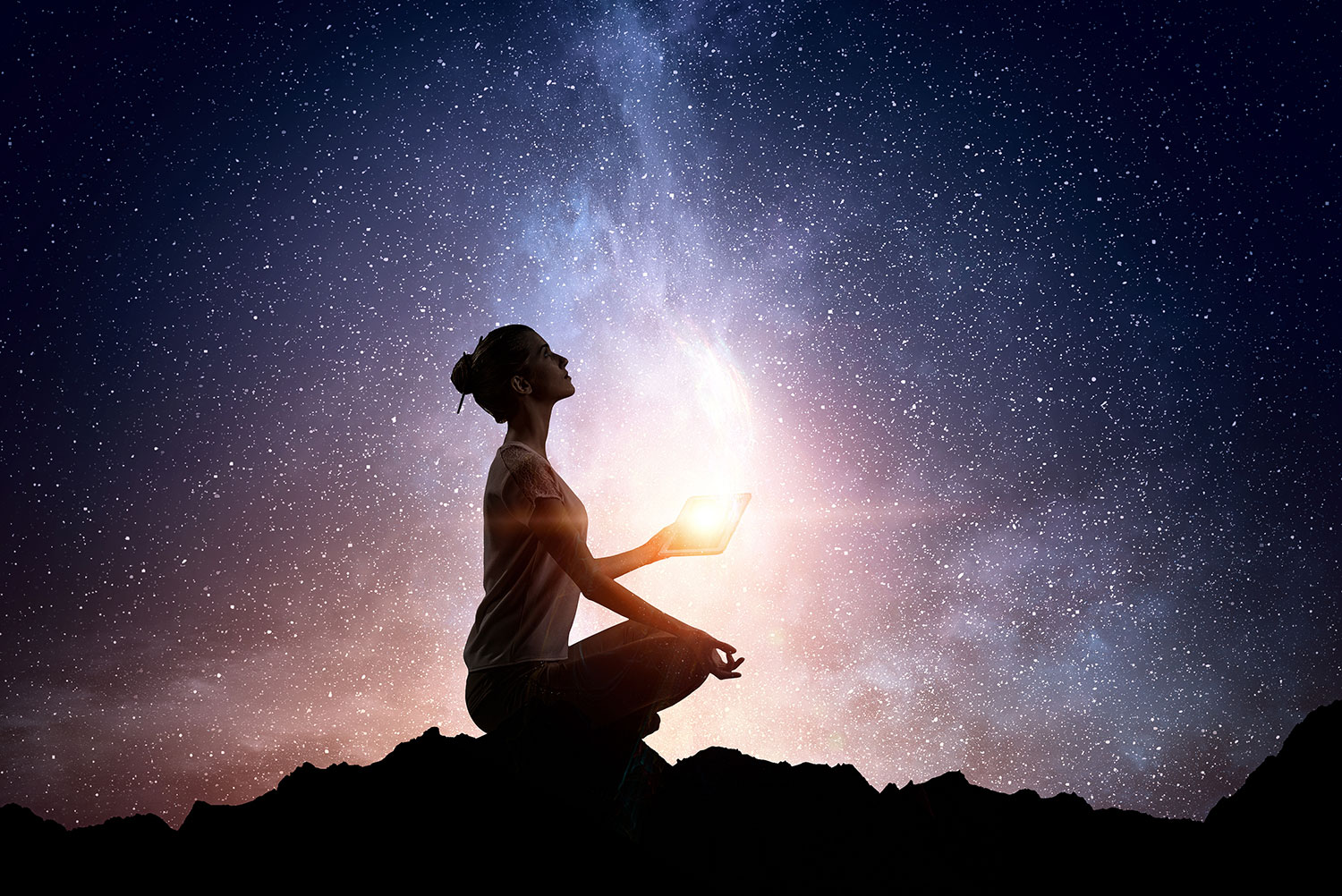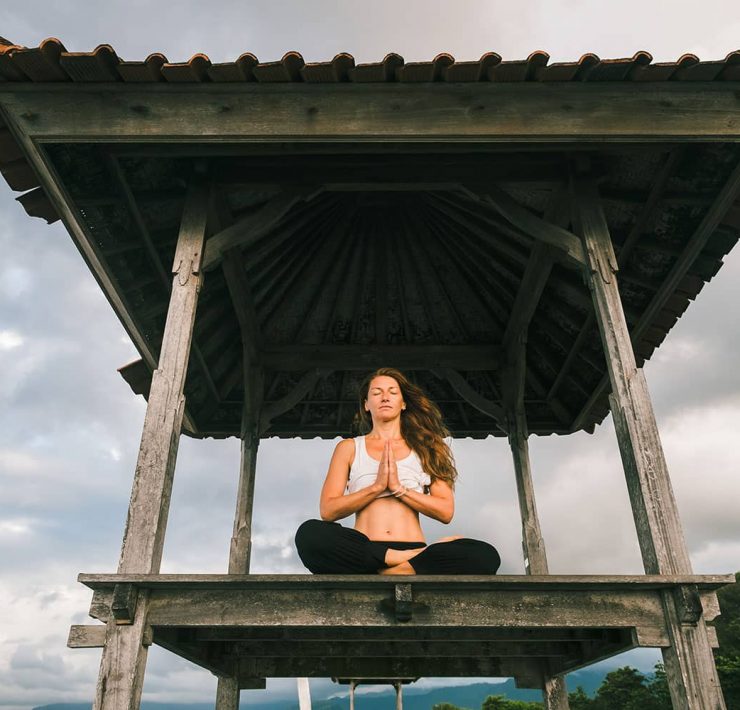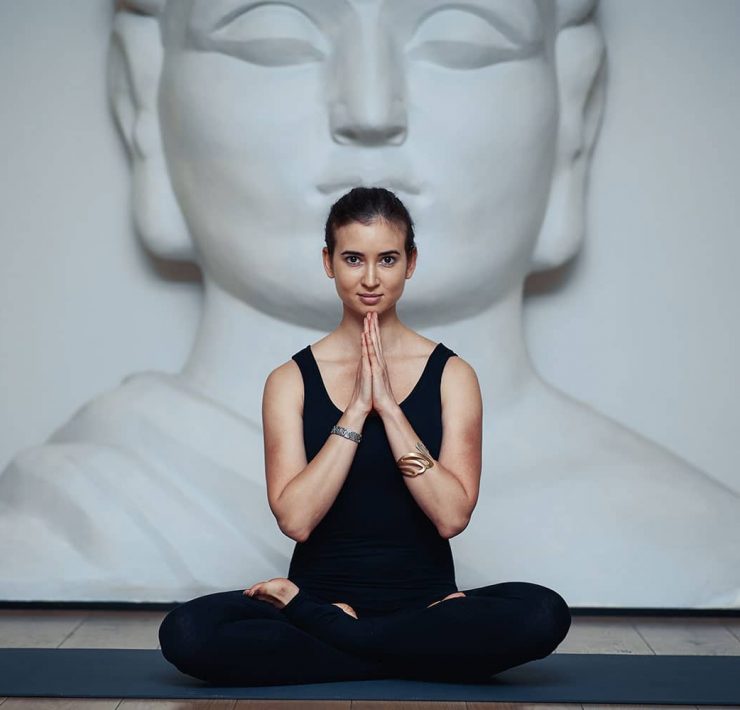
Having been a teacher’s assistant at over 50 yoga teacher…
Have you ever asked yourself the question, “Who am I?” Depending on what stage of life you are in, it can be hard to answer that question. If you live in the West, you might have the experience of defining yourself through your reputation or material possessions. However, most of us know our soul extends much deeper than what can be seen with the naked eye. And when it comes to answering the complex questions in life, the philosophy of yoga can help. One terrific way to get in touch with your true self is by studying the Koshas, otherwise known as the 5 layers of being.
Understanding the Koshas & Sanskrit Etymology
As defined by Wikipedia, the word “Kosha” is Sanskrit for “sheath.” The Koshas were first mentioned in an ancient Vedic era Sanskrit text called the Taittiriya Upanishad. In Vedic philosophy, the Koshas cover the self and are often visualized like the layers of an onion. There are 5 layers to the onion, otherwise known as the 5 layers of being. These 5 layers compose who you are as a person, from your physical body all the way out to your connection to the divine spirit.
The 5 layers of being are as follows:
- Annamaya kosha: the physical body that is nourished by food
- Pranamaya kosha: the energy body that is composed of prana
- Manomaya kosha: the mind or the mental aspect of the body
- Vijnanamaya kosha: your intellect and inner wisdom
- Anandamaya kosha: your bliss and connection to your infinite self
There are many different ways to activate and connect with your various levels of being. Some of the most common ways are through yoga, breath work, and meditation. Those various ways of bringing forth the 5 layers of being will be discussed later; in the meantime it is important to know the history behind the Koshas so you can better understand it’s meaning.
History of Koshas

Although we know the koshas are first recorded in the Taittiriya Upanishad, no one knows exactly how old the teachings are. At a minimum, it’s thought the teaching stem back to the start of Hatha Yoga in 800-900 C.E., if not earlier. In the Taittiriya Upanishad, the koshas are described so that the reader can heighten their spiritual awakening by getting in touch with their true self. According to the Taittiriya Upanishad, a wise person is not only aware of their 5 levels of being, they also accept the influence of each of these layers and use them for discernment.
Annamaya Kosha (Physical Sheath)
The Sanskrit word “Annamaya” breaks down to two parts, “anna” and “maya.” “Anna” is Sankrit for “food” or “physical matter,” and “maya” means, “made of.” Therefore, the word “Annamaya” literally means “made of food,” or “made of physical matter.” It’s a pretty interesting perspective to consider that your body is made of food!
The first of the koshas, the physical sheath, is probably the easiest to identify. Your physical body is just that – your actual body, bones, organs, muscles, hair, and all. Embodying the physical sheath can be very empowering; few people know exactly where all of their organs are even located in their body. The physical layer of being is also connected to food, as it is what sustains this body. Therefore, when you are connecting to your annamaya kosha, it is helpful to pay close attention to what your are eating. A healthy annamaya kosha is nourished by the right foods for your unique constitution.
Annamaya Kosha (Physical Sheath) Exercises

One of the best ways to activate the annamaya kosha is, of course, by doing yoga asanas! Yoga is a wonderful tool for getting in touch with the physical sensations in your body. If you want to bring awareness to your physical body, incorporate embodied anatomy into your yoga practice. This means that when you do twists for example, you consciously feel what organs are twisting, and maybe even name them out loud. You can also do a mindfulness meditation body scan, where you take your awareness all the way from your little pinky toe to your third eye.
Pranayama Kosha (Energy Body)
If you are familiar with yoga, then you have likely heard the term “pranayama.” In Sanskrit, “pranayama” means “made of life force.” Prana is the life force that holds together the mind and body. This kosha is thought to be more subtle than annamaya – it isn’t something you can easily touch or even visualize. Connecting to your pranayama kosha takes some imagination, but there is evidence that it exists. For example, have you even felt a shift in your heart or mind while practicing yoga? That is the prana moving through your body.
Pranayama kosha can also be felt as heat moving through your body. Pranayama kosha is energy; whether you feel sleepy, dull, listless, calm, or invigorated, those are all examples of various states of prana in the body. Even the food we eat has pranayama; when vegetables and fruit are fresh-picked, there is an increased sense of vitality when you eat them. One of the most common ways to increase your prana and move stuck energy is through breath work. Realistically, you do not have to do anything fancy to move stuck energy this kosha. All you have to do is bring awareness to your breath; it can also be helpful to connect to the breath while doing asanas.
Pranayama Kosha (Energy Body) Exercises

In Yoga Journal, author Sally Kempton offers an amazing exercise for actually feeling your pranayama kosha. She suggests that instead of doing breath work and thinking “I am breathing,” think, “I am being breathed.” This subtle shift can really take your awareness out of the confines of your physical body and into a larger sense of existence. Another fantastic exercise comes from restorative yoga, and can be practiced every day. Just lay on your side, over a yoga bolster. Stretch the bottom arm out straight and the bottom leg forwards as a counter balance. Use your bottom arm to gently pull your top arm; this practice lengthens your intercostal muscles and increases the oxygen intake of your body. Just remember to do both sides.
Manomaya Kosha (Mental Body)
If you think to yourself, “Where am I in my body right now?” you might end up a little perplexed. The truth is, many of us aren’t in our bodies for majority of the day; we are in our manomaya kosha. The manomaya kosha is essentially the mind. In Sanskrit, “Mano” means “mind” and of course, “maya” means “made of.” So this kosha is “made of the mind.” This does not just include your thoughts; the manomaya kosha also encompasses all five of your senses, your emotions, thought processes, and your nervous system.
Many people have an overactive manomaya kosha. To discover whether this is true for you, consider how often you find yourself ruminating or overthinking things instead of being present in the experience. Some mindfulness practitioners refer to this as the “monkey mind;” it just leads you from one shiny thought to another. If this describes you, don’t feel bad – many of us experience an overactive manomaya kosha from time to time. And it makes sense – the manomaya kosha processes all of our senses, and unless you live in an isolated little cabin in the woods, you’re probably processing thousands of senses every day! Thankfully, one of the best ways to quiet the mind is by doing yoga.
Manomaya Kosha (Mental Body) Exercises

Is life really worth living if you don’t feel inner peace? There are so many products for sale in the world that either explicitly or inexplicitly claims to give you peace. And even if it works temporarily, the feeling is often short-lived. Yoga is one of the best ways to gain control of your mind and take your inner piece into your own hands. And, it costs relatively little money. With a yoga mat and Internet connection (or a library card) you can access a healing practice that can connect your to spirit and an overall sense of wellbeing.
Yoga and meditation are excellent tools for taming the manomaya kosha. To get started, find a quite space and sit down with your legs crossed. Use a pillow or folded blanket to elevate your hips so that they are higher than your feet. Close your eyes and let your thoughts pass over you like clouds. If you find yourself engaging with a thought, acknowledge it and let it pass.
Vijnanamaya Kosha (Wisdom or Awareness Body)
Similar to pranayama kosha, vijnanamaya kosha is a little abstract. One way to understand it’s meaning is to explore it’s Sanskrit roots. “Vijnana” means “intellect” or “will.” Therefore, this is the layer of the body that dictates your morals and intellectual side. In other words, the vijnanamaya kosha is your wisdom. This wisdom exists inside of your consciousness, and it comes from deep within your intuition and awareness. Activities like writing enact the vijnanamaya kosha, as do music, painting, and different types of problem solving.
Vijnanamaya Kosha (Wisdom or Awareness Body) Exercises

The vijnanamaya kosha allows you to view yourself objectively. This subtle energy body shines when the first three koshas are in balance. The vijnanamaya kosha is only able to lead the way when the mind is quite, and that is why it often comes out during yoga practice. It is easier to access the vijnanamaya kosha while practicing backbends like Full Wheel Pose. As you come out of the pose, lay still for a moment and see what kind of consciousness comes forth. More often than not you will find it easier to be objective in that space.
Anandamaya Kosha (Bliss Body)
Doesn’t the term “bliss body” just sound fantastic? Well, that is exactly what the anandamaya kosha is, blissful! In Sanskrit, the root word “ananda” means, “bliss.” Often the Anandamaya Kosha is regarded as your higher self or all-knowing self. This is the part of you that is directly connected to source energy. Interestingly enough, in the Upanishads this sheath is referred to as the “casual body.” This sense of being can come about while practicing or teaching yoga, and it is also known to come out during deep sleep while dreaming. Just think, while you’re sleeping you have no resistance to manifestation; anything is possible.
Anandamaya Kosha (Bliss Body) Exercises

A wonderful way to access the anandamaya kosha is through yoga nidra, or yogic sleep. This practice isn’t really sleeping at all. Instead, you drop your mind into different brain waves using meditation cues. While you don’t fall asleep per say, you do slip into a conscious dream-like state, and it can be incredibly freeing and relaxing. Many people are able to practice yoga nidra using YouTube videos or by getting a session with a yoga teacher that specializes in the practice. In this article by Yoga International, the author also recommends acts like selfless service, bhakti yoga, and intensely focused meditation.
What's Your Reaction?
Having been a teacher’s assistant at over 50 yoga teacher trainings worldwide, Rebecca Rebecca has a firm grasp on the fine art of yoga and meditation. In her work, she carefully reflects on a vast expanse of knowledge to help others find peace in both body and mind.














